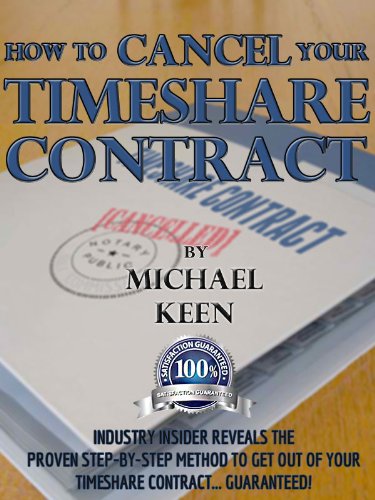Most likely one of the most complicated features of mortgages and other loans is the calculation of interest. With variations in intensifying, terms and other aspects, it's hard to compare apples to apples when comparing mortgages. Often it appears like we're comparing apples to grapefruits. For instance, what if you wish to compare a 30-year fixed-rate mortgage at 7 percent with one point to a 15-year fixed-rate home mortgage at 6 percent with one-and-a-half points? First, you need to remember to also consider the fees and other expenses associated with each loan.
Lenders are required by the Federal Truth in Loaning Act to disclose the effective percentage rate, as well as the total financing charge in dollars. Advertisement The yearly portion rate (APR) that you hear a lot about allows you to make real contrasts of the real expenses of loans. The APR is the typical annual financing charge (that includes fees and other loan expenses) divided by the quantity obtained.
The APR will be a little greater than the interest rate the loan provider is charging because it includes all (or most) of the other costs that the loan brings with it, such as the origination fee, points and PMI premiums. Here's an example of how the APR works. You see an ad using a 30-year fixed-rate home loan at 7 percent with one point.
Easy option, right? Really, it isn't. Thankfully, the APR thinks about all of the fine https://blogfreely.net/arwynecg9w/purchasing-a-house-can-be-both-a-fantastic-and-demanding-procedure-at-the-same print. State you require to obtain $100,000. With either loan provider, that implies that your regular monthly payment is $665.30. If the point is 1 percent of $100,000 ($ 1,000), the application cost is $25, the processing fee is $250, and the other closing fees total $750, then the overall of those charges ($ 2,025) is deducted from the real loan quantity of $100,000 ($ 100,000 - $2,025 = $97,975).
To find the APR, you identify the rate of interest that would relate to a month-to-month payment of $665.30 for a loan of $97,975. In this case, it's really 7.2 percent. So the second lending institution is the much better offer, right? Not so fast. Keep checking out to learn more about the relation in between APR and origination fees.
When you go shopping for a house, you may hear a little industry lingo you're not knowledgeable about. We have actually developed an easy-to-understand directory of the most typical home mortgage terms. Part of each month-to-month home mortgage payment will go towards paying interest to your lending institution, while another part goes towards paying for your loan balance (likewise understood as your loan's principal).
During the earlier years, a higher part of your payment goes toward interest. As time goes on, more of your payment approaches paying down the balance of your loan. The deposit is the cash you pay upfront to buy a house. In a lot of cases, you have to put money down to get a home mortgage.
For example, traditional loans require as little as 3% down, however you'll have to pay a month-to-month fee (referred to as private home mortgage insurance coverage) to make up for the little deposit. On the other hand, if you put 20% down, you 'd likely get a better interest rate, and you wouldn't have to pay for private mortgage insurance coverage.
Part of owning a house is spending for property taxes and property owners insurance. To make it simple for you, lending institutions established an escrow account to pay these costs. Your escrow account is managed by your lending institution and operates sort of like a checking account. Nobody makes interest on the funds held there, however the account is used to gather money so your lending institution can send out payments for your taxes and insurance coverage in your place.
Not all home mortgages include an escrow account. If your loan does not have one, you have to pay your real estate tax and homeowners insurance bills yourself. However, most loan providers use this option due to the fact that it enables them to make sure the home tax and insurance coverage costs make money. If your deposit is less than 20%, an escrow account is required.

Keep in mind that the quantity of money you need in your escrow account depends on just how much your insurance and real estate tax are each year. And considering that these expenses may change year to year, your escrow payment will alter, too. That means your regular monthly home mortgage payment may increase or decrease.
There are 2 types of home mortgage rate of interest: fixed rates and adjustable rates. Fixed rates of interest remain the exact same for the entire length of your home mortgage. If you have a 30-year fixed-rate loan with a 4% interest rate, you'll pay 4% interest till you settle or re-finance your loan.
Adjustable rates are interest rates that change based on the marketplace. A lot of adjustable rate mortgages start with a set interest rate period, which normally lasts 5, 7 or 10 years. Throughout this time, your interest rate remains the exact same. After your fixed interest rate period ends, your interest rate changes up or down as soon as each year, according to the market.
ARMs are right for some debtors. If you plan to move or refinance prior to completion of your fixed-rate period, an adjustable rate home loan can give you access to lower rate of interest than you 'd normally discover with a fixed-rate loan. The loan servicer is the company that's in charge of supplying monthly home loan declarations, processing payments, handling your escrow account and responding to your questions.
Lenders might offer the servicing rights of your loan and you might not get to pick who services your loan. There are many types of home loan loans. Each includes different requirements, interest rates and advantages. Here are a few of the most common types you may hear about when you're applying for a mortgage.

You can get an FHA loan with a down payment as low as 3.5% and a credit score of simply 580. These loans are backed by the Federal Housing Administration; this suggests the FHA will reimburse loan providers if you default on your loan. This lowers the risk lending institutions are handling by providing you the cash; this implies lenders can use these loans to borrowers with lower credit rating and smaller sized deposits.
Traditional loans are often also "conforming loans," which suggests they fulfill a set of requirements specified by Fannie Mae and Freddie Mac two government-sponsored business that purchase loans from loan providers so they can offer home loans to more individuals. Traditional loans are a popular choice for purchasers. You can get a standard loan with just 3% down.
This contributes to your regular monthly expenses however allows you to enter a brand-new home quicker. USDA loans are only for houses in qualified backwoods (although numerous homes in the suburbs qualify as "rural" according to the USDA's definition.). To get a USDA loan, your home earnings can't go beyond 115% of the area typical income.